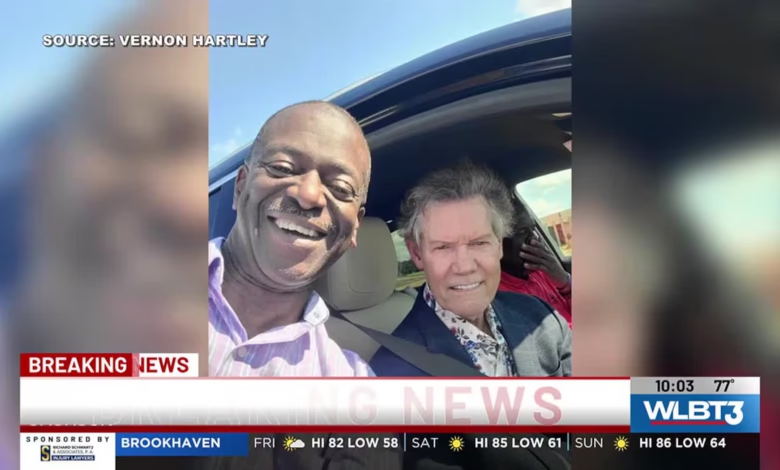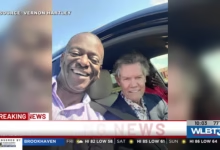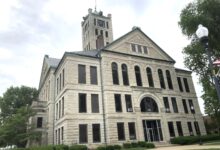A New Chapter — Randy Travis Jackson Mall Investment

The Randy Travis Jackson mall investment reflects a heartfelt revival of a once-vibrant community landmark. Country music legend Randy Travis and his wife, Mary, have taken ownership of Jackson, Mississippi’s defunct Metro Center Mall’s former Burlington Coat Factory wing, launching a project to reawaken a long-neglected part of the city.
What makes this investment especially compelling is its blend of celebrity symbolism and real community impact. For locals, the project signals a resurgence of commerce and social life; for the Travises, it’s an opportunity to give back, merging commercial strategy with personal passion. The focus extends beyond infrastructure to legacy, revival, and purpose.
Heading Two: MetroCenter Mall’s Rise, Fall, and Randy Travis Jackson Mall Investment Revival
The Rise and Fall of the MetroCenter Mall
MetroCenter Mall, inaugurated in 1978, was once Mississippi’s largest indoor mall—sprawling over 1.25 million square feet with anchor stores like Sears, Dillard’s, and Burlington Coat Factory. Its location near the junction of Interstates 20 and 220 made it a hub for shoppers, families, and social gatherings.
Over the years, however, a decline set in. Foreclosure struck in 2012 after poor management and dwindling foot traffic. Gradually, tenants pulled out. By 2022, the last anchor, Burlington, had moved out, leaving the mall empty and deteriorating. The once-vibrant corridors became silent shells.
Randy Travis Jackson Mall Investment — A Strategic Bet on Revival
Enter the Randy Travis Jackson Mall investment. Reports confirm that the Randy Travis Foundation now owns the Burlington Coat Factory portion of the property—documented in Hinds County land records earlier this year. Although exact purchase terms remain undisclosed, the scale of the acquisition is clear.
State officials, including Governor Tate Reeves, engaged with the couple, discussing how Mississippi might support the redevelopment. While a spokesman for Travis noted there are “currently no plans to develop anything related to Randy Travis on the site,” developers present described ideas for a Randy Travis Country Store or Travel Center—though these remain unconfirmed.
What could Randy Travis Jackson’s mall investment Mean for Jackson?
Economic Boost and Community Revitalization
For Jackson’s south side, the Randy Travis Jackson mall investment offers much-needed economic optimism. City council members describe the area as ripe for business, with highway access making the site appealing. Revitalizing part of the mall could inject jobs and new businesses, potentially benefiting the entire area.
Civic Engagement and Symbolic Hope
This investment carries more than fiscal promise—it’s an anchor of hope. Councilman Vernon Hartley commented, “I believe it will be a great, great investment for this south Jackson community,” capturing how a single commitment can ripple outward.
Debates and Skepticism
Not all reactions have been rosy. Local radio host Clay Edwards described the move as a “risky bet,” even jokingly calling it a “redneck Buc-ee’s,” pointing to local crime and demographic concerns. Edwards also raised important questions about Travis’s health since his stroke in 2013, sparking debate about motivations and feasibility. This underscores that Randy Travis Jackson’s mall investment is not without its controversies, highlighting the delicate balance between vision and realism.
Expertise Insights — Why Randy Travis Jackson Mall Investment Matters Strategically
Smart Real-Estate Timing
Investing in abandoned urban properties can be a high-risk but potentially high-reward strategy. The site’s location near major interstates offers logistical advantages—an incentive for retail, hospitality, or mixed-use models. As retail trends shift, flexibility and meaningful branding can make such properties thrive again.
Foundations and Community Alignment
The involvement of a charitable foundation provides an interesting angle. Even if commercial gains are modest, aligning redevelopment with philanthropic goals like arts enrichment (core to the Randy Travis Foundation’s mission) could not only deliver ROI but also social impact.
Navigating Challenges
An expert approach requires a staged planning process: environmental assessments, phased construction, partnerships with the city, and engagement with local stakeholders. Managing crime, maintenance, and community trust will be critical to transforming a distressed property into a safe, welcoming space.
Heading Five: Framing a Narrative — How to Tell the Randy Travis Jackson Mall Investment Story
This project presents a compelling narrative: a music legend transforming into a muse for urban revival.
To captivate audiences, the storytelling could follow these strands:
- History: Paint the nostalgia of the mall’s heyday and its lost promise.
- Characters: Show Randy Travis not as a star, but as an investor with roots and vision.
- Journey: Chronicle steps from acquisition to development — meetings, planning, setbacks, community reactions.
- Impact: Highlight potential ripple effects—jobs, community pride, hopeful urban identity.
- Conflict: Include critics’ voices for balance, tension, and realism.
FAQs: Randy Travis Jackson Mall Investment
Q1: Who is behind the Randy Travis Jackson mall investment?
A: The Randy Travis Foundation, led by country music legend Randy Travis and his wife Mary, purchased the former Burlington Coat Factory section at Jackson’s Metro Center Mall.
Q2: What are the redevelopment plans?
A: No official plans have been confirmed. Developers have floated ideas like a Country Store or Travel Center, but a spokesperson said “no plans” are in place for site-specific development.
Q3: Why is this investment significant for Jackson?
A: It marks a possible turnaround for a long-dormant property and signals hope for economic and community resurgence in south Jackson.
Q4: Are there critics or concerns?
A: Yes. Some express skepticism over the feasibility, local crime, and whether a celebrity-driven project is practical. Not all share the optimism.
Q5: What next steps should we watch for?
A: Plans for usage, community engagement strategies, phased development announcements, and signs of tangible progress—like ground-breaking or financing details—will be key indicators.




